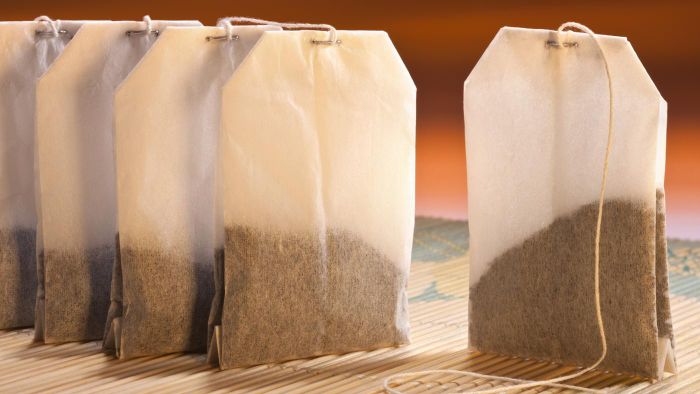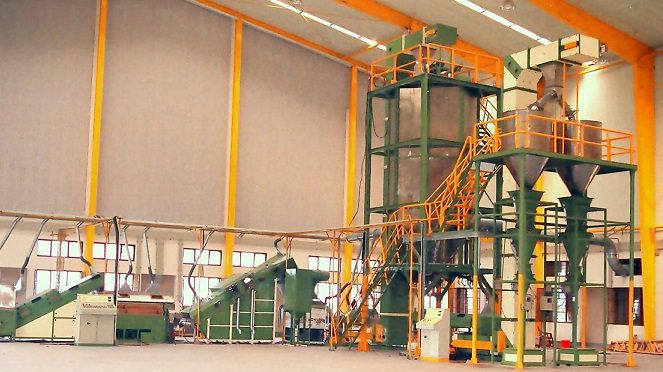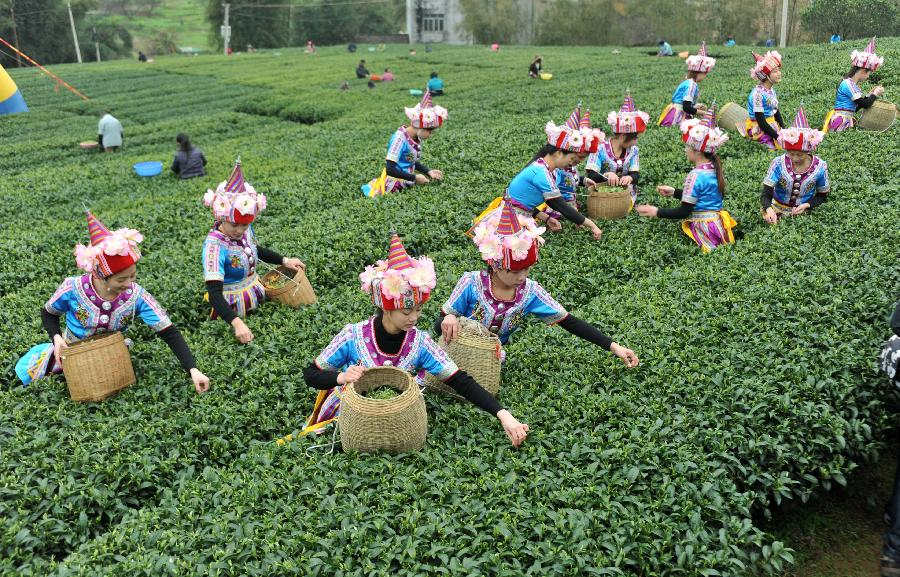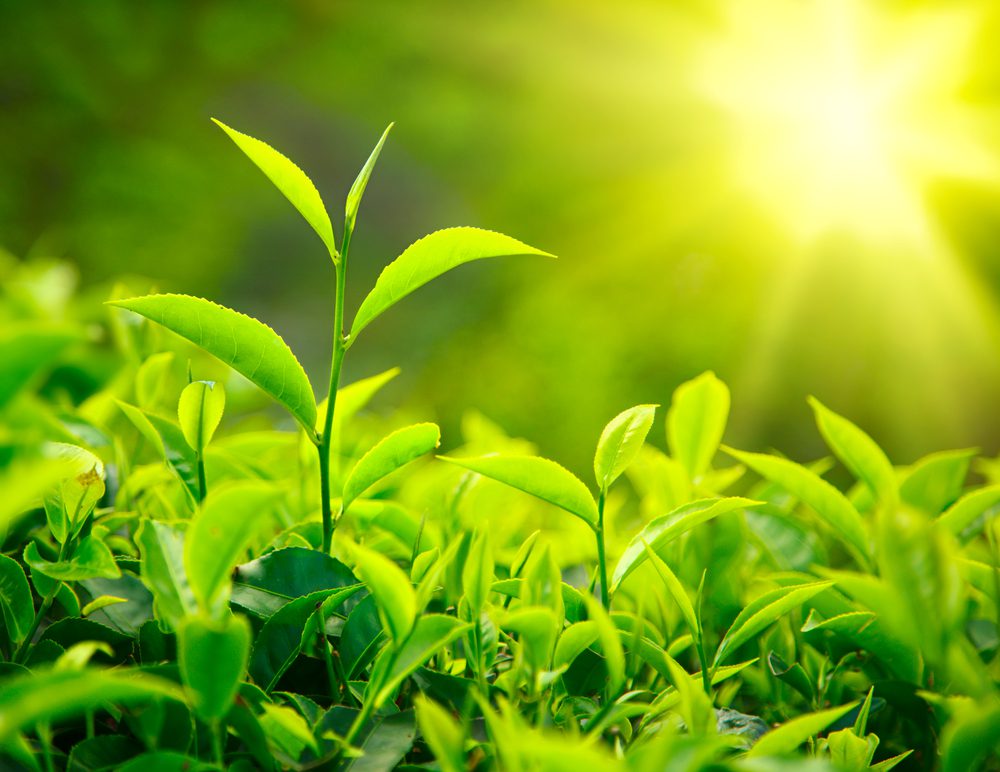Ah! The infinite joys of a cup of tea! A triple hurrah for Camellia Sinensis– the plant that gives tea lovers across the world that elixir of ecstasy- “Tea- the cups that cheer but not inebriate”. William Cowper couldn’t have coined that better- for there’s something about tea that soothes the fevered brow and comforts the broken heart. It helps build bridges, softens the harsh contours of life and invites confidences! “The mere chink of cups and saucers tunes the mind to happy repose”- well said, George Gissing.”
With so much glamor and clamor around this little plant, let’s steep ourselves deeper and see what this magical infusion has to say for itself.
Origin of Tea
Imagine the millions of cups of tea that we have consumed over the thousands of years that it’s been around! There are so many legends and myths surrounding the discovery of tea that it would take many cups to really do justice. Even today, it’s a mystery as to where and when the first cup of tea was brewed. However, one legend that seems to have endured the passage of time is that pertaining to the Chinese emperor Shen Nung. Apparently, he mandated that his people boil all drinking water. A leaf from an overhead tree fell into the water and colored it brown. The emperor enjoyed the amber colored infusion and that became TEA.
Varieties of Tea
The little tea plant with such a forbidding name is very particular about its ‘growing environment’. That’s why the main three varieties – Sinensis, Cambodiensis, and Assamica choose their abodes. Sinensis originated in China and grows in Taiwan, India, Nepal, and Japan. The small leaves of this plant adapt well to cooler climes. Assamica with its Southeast Asian roots and larger leaves prefers the warmer climes of Sri Lanka, Africa, and India. Cambodiensis grows in Cambodia and Java. However, this tea is never brewed alone. Very often it forms part of a hybrid.
Loose Leaf Tea & Tea Bags
What is Loose Leaf Tea and what are Tea Bags? Let’s see…
Although tea plants grow pretty well at sea level and in altitudes as high as 1.3 miles above sea level, they are partial to acidic soil and regions that have heavy rainfall. That’s why the best tea grows on steep slopes and higher elevations. Premium tea is quality tea as it consists only of the top two leaves and the unopened leaf of the tea plant. Great care is exercised during picking and processing. Ardent tea lovers advocate loose leaf tea ardently. Whole tea leaves when brewed, expand and give off the best of flavors. The quality of the end product is like none other.
Machine harvested tea grows on flat, lowlands. These teas consist of more than just the uppermost leaves and unopened buds. They include chopped pieces of stalks, stems and older leaves. However, this process damages many tea leaves and affects the quality of tea. This tea is packed into tea bags, which are very popular. Naturally so, as tea bags are easy to store, quicker to brew and convenient to pack. Trapped in bags, the tea leaves cannot expand during brewing and the tea loses much of its flavor and nutrients. Plucking the top leaves and a bud every time, ensures that the plants remain in the “early stage of growth”.
How Tea is Made
Tea processing essentially consists of five basic steps- Plucking, Withering, Rolling, Oxidizing, Firing.
Plucking tea leaves from the Camellia Sinensis plant is an important process and takes place during early summer or spring or in late spring. Hand plucked leaves result in higher quality teas. Machine harvesting sometimes results in a great number of broken leaves and the quality of tea suffers.
Withering– Due to enzymatic oxidation, leaves begin to wilt once they are plucked. Withering reduces moisture content. They are then kept either in the sun or in a cool, breezy room. However, monitoring of humidity and temperature is a must.
Rolling/Twisting/Crushing helps to release the natural juices in the leaves. Leaves curl up during this process. If bruising is uniform, consistent batches of tea are obtained.
Oxidizing is part of the fermentation process and is very important. Chemical reactions take place, tea leaves change color. This process is responsible for the flavor and aromas of finished teas. Depending on the kind of tea, oxidation is prevented or started, controlled and then stopped.
Firing begins the drying process. Heat stops oxidization and reduces the moisture content. Leaves change color once again- from copper to dark brown or black.,
After basic tea processing is over, Sorting and Grading begin.
Sorting/Grading
Segregating leaves according to size, shape, and color (sorting) is a pre-requisite to grading. However, it is the quality and condition of tea leaves that determine the grade. The better the condition, the higher the grade. Orange Pekoe (OP), made from leaf buds is the highest grade. Broken Orange Pekoe (BOP), made from broken leaves follows next. Fannings- the smaller broken leaves and the final residue are both used in tea bags.
There’s more to Tea than you know!
There are 6 main types of teas- Black, Oolong, White, Green, Yellow and Fermented Tea. They look different and taste different. This, despite the fact that they all come from the same Camellia Sinensis tea plant! So what makes them different? Processing tea leaves differently for different durations accounts for the variation in color, smell, and flavor.
Black Tea
Completely oxidized tea is Black Tea. The plucked leaves are withered, rolled, crushed, oxidized and fired to get black tea. Crushing hastens the oxidation process and when the leaves turn black, the ovens fire and the oxidation process stops.
Black tea has a strong flavor and is very astringent. The brewed tea has colors that range from dark brown to deep red. Black tea, widely known as ‘red tea’ in China is also popular in the West. Assam, Nilgiris, and Darjeeling in India are famous for their black teas. Undoubtedly, hand-picked black teas are far superior to the machine-processed ones.
Earl Grey tea is a famous English black tea, while Keemun, Lapsang Souchong and Yunnan are famous Chinese black teas. Our very own Masala Chai is a mixture of black tea and spices.
Green Tea
Processing of Green Tea is almost similar to black tea. Spreading out the plucked leaves on mats and exposing them to heat- sunlight or warm air- for the right time is extremely vital. Heating prevents oxidation without leaves losing their freshness. After rolling, twisting and curling they are then pan-fired or dried. High temperatures destroy the enzymes that aid oxidation. The tea leaves thus retain their green color, the vitamin C, tannins and even the chlorophyll. Japanese steam the tea leaves to achieve the same effect. Their green teas have hues that range from pale green to a deeper, grassier green. Steamed green teas are delicate and more susceptible to temperature. Unlike Black Tea, which has a strong flavor and taste, Green Tea has a more natural flavor and a grassy or steamy taste.
Dragon’s Well and Pi Lo Chun are famous Chinese Green Teas while Sencha, Houjicha, Genmaicha, Kukicha, Gyokuro, and Matcha are popular Japanese varieties. Popular Indian brands are Organic India, Tetley and Taj Mahal.
Oolong Tea
Oolong Tea takes oooo-long time to make. Spreading out the plucked leaves and withering them in the sun or warm air is the first step. Tossing/ rolling and shaking the leaves allows partial oxidation to take place. Hence the leaves never become black. Natural fermentation is stopped by pan-firing or steaming. The end result is a smooth product that has a wonderful aroma and a rich, floral or fruity flavor. For those who are not tea-drinkers, a cup of Oolong Tea could well be a game-changer. This cup of tea is a favorite in south China and suits the palates of green tea drinkers as well as black tea drinkers. Oolong falls somewhere between both of them. Different tea estates have their own ways of making Oolong Tea and that’s why you can find a wide array of aromas and distinctive flavors and fragrances.
White Tea
This tea is not really white in color but varies from a pale green to yellow and has a delicate flavor. White Tea gets its name from the ‘white, silvery hairs’ appearing on the unopened buds. The white down makes the buds soft and silky to touch. Plucking tea buds when they are still tight and unopened within new leaves is the secret of white tea. Processing of leaves is minimal to prevent oxidation. Tea plants that have large and fleshy leaf buds are generally used to make white tea. Exposing the buds to sunlight or air-drying them for a couple of days is an important part of the process. Drying using a tumble dryer is very common.
As this tea is very rare, it’s more expensive than the other teas. White teas such as Silver Needle and White Peony are popular in China.
Yellow Tea
Processing of green and yellow teas happen in almost the same way. Leaves are first withered and then fixed. This means stopping oxidation if it has started or preventing it altogether. The next step is wrapping the leaves in thick paper or cloth as the case may be. Firing and the re-wrapping process happens once again followed by slight oxidizing. Repeating the process several times at stipulated intervals for three days brings the main process to a close. Slow roasting of the leaves signifies the end of the procedure. Yellow teas are rare as the whole process is time-consuming,
Found in China, Meng Ding Huang Ya and Mo Gan Shan are the rare yellow teas.
Fermented Tea or Pu-erh Tea
Made from the leaves of the trees from the Yunnan region, these teas are favorites in China. Harvesting the leaves carefully is the first priority. Applying heat to stop oxidation is a delicate process. The ultimate aim is to remove moisture without killing the natural bacteria. Withering and rolling removes a little more moisture without damaging the leaves. Compressing the leaves into cakes or bricks is the next step. Storing the compressions in cellars that have temperature and moisture control completes the process. The leaves mature over time after at least three months of aging. The longer the leaves remain in the cellar, the more the aging and greater the Pu-erh tea flavor- just like wine! Would you prefer this to be your cup of tea?
Flavored and Herbal Teas
Adding herbs, flowers, or fruits to green, black or oolong tea gives you flavored teas, but Steeping dried flowers, fruits or leaves in boiling water makes herbal teas or tisanes. Though these are not teas in the strict sense, these infusions are very popular and just as good as the ‘ubiquitous cup of tea’.
We have teas and teas and you can drink a different cup of tea each time and still yearn for more! Our tea journey is not quite over- so watch and wait- as we delve into the benefits of tea, brewing of tea and customs of tea drinking across the world.
“If you are cold, tea will warm you; should you be too heated, it will cool you; if you are depressed, it will cheer you; if you are excited it will calm you”, said William Ewart! So which is your cup of tea? Be it Green, Yellow or Black, enjoy your cup of tea while you wait for the next part of this exciting Tea Journey.












Pingback: Tea Drinking – Traditions and Cultures Add Flavor - Wahsome!